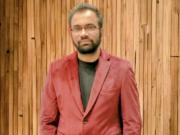
Earlier researchers found that if elastocaloric effect is used, it may be able to get a substitute of fluid refrigerants used in fridges and air-conditioners. Now Chinese scientists have hit upon a newly created version of stretching and twisting the rubber band that may revolutionize refrigeration technology.
Researchers are upbeat that if this setup works properly then there will be no need for fluid refrigerants that actually contribute to global warming, which is the most controversial clause for discussion during the Paris climate talks.
To make sense of how the contorting instrument may have the option to empower a cooler, engineering graduate Run Wang at Nankai University in Tianjin, China and his team analyzed the cooling intensity of elastic filaments, nylon and polyethene angling lines and nickel-titanium wires.
The researchers later observed the high cooling from twist changes in twisted, coiled and supercoiled fibres. By twisting and untwisting the fibres, the researchers were able to measure their performance as coolants. They measure a heat exchange of about 20 joules of heat energy per gram for the rubber fibre.
The researchers reported in Science that the level of efficiency of the heat exchange in rubber bands is "comparable to that of standard refrigerants and twice as high as stretching the same materials without twisting".
Kurt Engelbrecht, an elastocaloric cooling expert at the Technical University of Denmark in Roskilde said that it would "definitely" be a high-performance system.
The researchers believe that it may lead to greener cooling technology which would also be physically more compact than a pure-stretch system.
"To get a high degree of cooling in rubber without twisting, for example, it typically has to be stretched to seven times its length," said another author of the paper, Ray Baughman, who is a physicist at the University of Texas in Dallas.









